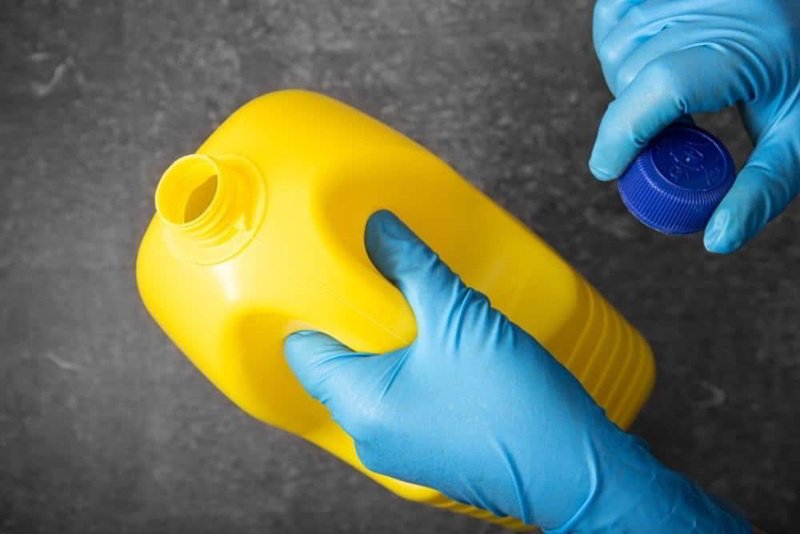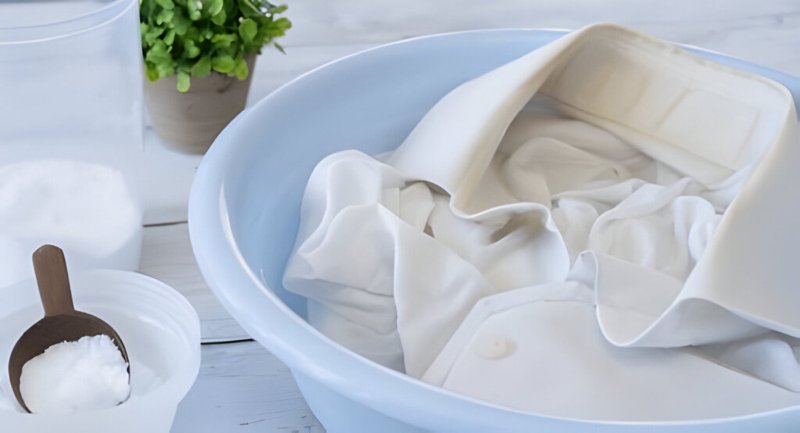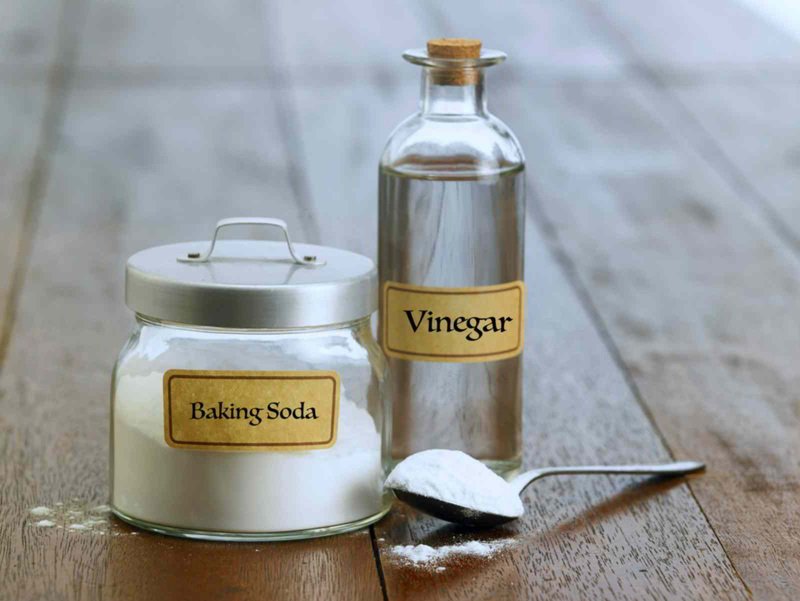Safely Bleach Clothes: Tips to Avoid Damage and Whiten
Keeping white clothes looking their brightest can be a real challenge, especially for small businesses dealing with large quantities of garments. Over time, even the most pristine whites can become dingy, yellowed, or stained, impacting the perceived quality of your clothing line. This comprehensive guide is designed to provide you, as a clothing business owner, with the essential knowledge to restore and maintain the brilliance of your white garments.
This guide covers a range of techniques, from traditional methods to natural alternatives, all aimed at preserving the pristine condition of white clothes. Whether you’re dealing with cotton, synthetics, or delicate fabrics, you will find practical, expert-backed solutions to keep your inventory looking its absolute best, ensuring customer satisfaction and protecting your brand’s reputation.
1. Safety precautions before bleaching
Before diving into the bleaching process, prioritizing safety is crucial. Working with bleach, a powerful chemical, requires careful handling to protect both yourself and the garments. Always ensure the workspace is well-ventilated. Ideally, work outdoors or open windows and use fans to increase airflow, minimizing the inhalation of fumes.
Protect your skin and eyes by wearing rubber gloves and safety glasses. An apron or old clothes will shield your clothing from accidental splashes, which can cause irreversible discoloration. Never mix bleach with other cleaning agents, especially ammonia. This combination creates highly toxic fumes that are dangerous to inhale.
Always dilute bleach before use. Undiluted bleach can weaken fabric fibers, leading to damage, and may even cause yellowing rather than whitening. Perform a spot test on a hidden area of the garment, like an inner seam, to ensure the fabric can withstand bleach without adverse effects.
Follow the guidelines provided on the bleach container and check the garment’s care label for any specific warnings or instructions. Be aware of any phrases like “Do Not Bleach”.

2. How to bleach white clothes by soaking
Soaking is a highly effective method for restoring the brightness of white clothes, particularly those with overall dinginess or yellowing. This technique allows for controlled and even bleach exposure, minimizing the risk of damage.
- Preparation: Select a clean, non-metal container, such as a plastic bucket or tub. Ensure it’s large enough to comfortably submerge the garments. Fill the container with cool or lukewarm water. Hot water can set some stains and is generally not recommended for bleaching.
- Dilution: Add chlorine bleach to the water, following the manufacturer’s instructions. A general guideline is 1/4 cup of bleach per gallon of water. However, always refer to the specific product label, as bleach concentrations can vary. Stir the solution thoroughly to ensure even distribution.
- Soaking: Submerge the white garments in the diluted bleach solution, ensuring they are completely covered. Gently agitate the clothes to promote even penetration. Avoid overcrowding the container.
- Time: Allow the garments to soak for a maximum of 5-10 minutes. Prolonged exposure can weaken fibers and cause yellowing. Monitor the clothes closely during the soaking process.
- Rinsing: After soaking, remove the garments and rinse them thoroughly under cool, running water. Ensure all traces of bleach are removed. Multiple rinses may be necessary.
- Washing: Wash the items with other clothing, and follow the standard care routine.
- Drying: Remove excess water and then ideally airdry.
This methodical approach ensures a safe and effective bleaching process, revitalizing your white garments.

3. How to bleach white clothes in a washing machine
Using a washing machine for bleaching offers convenience, especially for larger loads of white clothes. However, it’s crucial to follow the correct procedure to avoid damaging the garments or the machine.
- Sorting: Separate white clothes from colored items to prevent color transfer. Even light-colored garments can bleed dye, dulling the brightness of whites.
- Pre-treating (Optional): For heavily soiled or stained items, pre-treating can enhance the bleaching process. Apply a stain remover or a paste of baking soda and water to visible stains before washing.
- Detergent: Add your regular laundry detergent to the washing machine. Choose a high-quality detergent formulated for white clothes, as these often contain optical brighteners.
- Bleach: Measure the appropriate amount of chlorine bleach according to the washing machine’s instructions and the load size. Most machines have a designated bleach dispenser. If yours does not, dilute the bleach in a quart of water and add it to the wash water after the cycle has started but before adding the clothes. Never pour undiluted bleach directly onto fabrics.
- Water Temperature: Select the hottest water temperature safe for the fabric. Hot water aids in stain removal and enhances the effectiveness of bleach. Check the garment care labels for temperature guidelines.
- Wash Cycle: Choose a normal or heavy-duty cycle, depending on the level of soiling. For delicate items, a gentle cycle may be more appropriate, even if using hot water.
- Extra Rinse: Add an extra rinse cycle to ensure all bleach residue is removed from the garments.
- Empty Rinse: After removing the clothes, run one final, empty rinse cycle. This flushes any leftover bleach from the machine, ensuring it won’t damage your next load of laundry.
- Drying: After washing, promptly remove the clothes and dry them. Ideally, air-dry white items in the sun, as sunlight has a natural bleaching effect.
By adhering to these steps, you can effectively utilize your washing machine to maintain the brilliance of your white clothing inventory.

4. Natural alternatives to chlorine bleach
For those seeking gentler, more environmentally friendly options, several natural alternatives can help brighten white clothes without the harshness of chlorine bleach. These methods are particularly suitable for delicate fabrics or for individuals sensitive to bleach.
- Lemon juice: Lemon juice, a natural bleaching agent, contains citric acid, which helps break down stains and brighten whites. Add 1/4 to 1/2 cup of pure lemon juice to the washing machine along with your regular detergent. Run a normal wash cycle using warm or hot water, depending on the fabric care instructions.
- Distilled white vinegar: White vinegar acts as a mild acid that can help dissolve residues and brighten fabrics. Add 1/2 to 1 cup of distilled white vinegar to the fabric softener dispenser or directly to the wash water during the rinse cycle. Do not mix vinegar with chlorine bleach.
- Baking soda: Baking soda is a natural deodorizer and mild abrasive that can help lift stains and brighten whites. Add 1/2 cup of baking soda directly to the washing machine drum along with your regular detergent.
- Sunlight: The sun’s ultraviolet rays have a natural bleaching effect. After washing white clothes, hang them to dry outdoors in direct sunlight. This method is particularly effective for removing lingering odors and enhancing brightness. It is best used after washing with another alternative.
These natural methods offer a gentler approach to whitening, reducing the risk of fabric damage and minimizing environmental impact.

5. Maintaining whiteness and preventing yellowing
Once your white garments are brightened, consistent care is essential to maintain their brilliance and prevent future yellowing.
- Separate washing: Always wash white clothes separately from colored items, even light pastels, to avoid color transfer.
- Prompt stain treatment: Address stains immediately. The longer a stain sits, the more difficult it is to remove.
- Proper detergent dosage: Use the correct amount of detergent. Too little detergent may not effectively clean, while too much can leave residue that dulls whites.
- Avoid overloading: Do not overcrowd the washing machine. Clothes need space to move freely for optimal cleaning.
- Regular sun drying: Whenever possible, air-dry white clothes in direct sunlight. The sun’s UV rays naturally bleach and freshen fabrics.
- Proper storage: Store white garments in a cool, dry, and dark place. Avoid storing them in plastic bags, which can trap moisture and promote yellowing. Use breathable cotton garment bags instead.
By implementing these preventative measures, you can extend the life and maintain the pristine appearance of your white clothing inventory.
Read more:
Maintaining the brilliance of white garments is non-negotiable for upholding the quality and reputation of your clothing business. This guide has provided a comprehensive roadmap on how to bleach clothes safely and effectively, covering crucial safety precautions, detailed methods for soaking and machine washing, viable natural alternatives, and preventative maintenance strategies.
Mastering these techniques ensures not only the restoration of brightness but also the preservation of fabric integrity. By consistently applying these safe and proven practices, you enhance product appeal, extend garment lifespan, and ultimately, reinforce customer trust in your brand.
Remember, careful and knowledgeable bleaching is key to achieving reliably professional results and keeping your white inventory looking its absolute best.






















